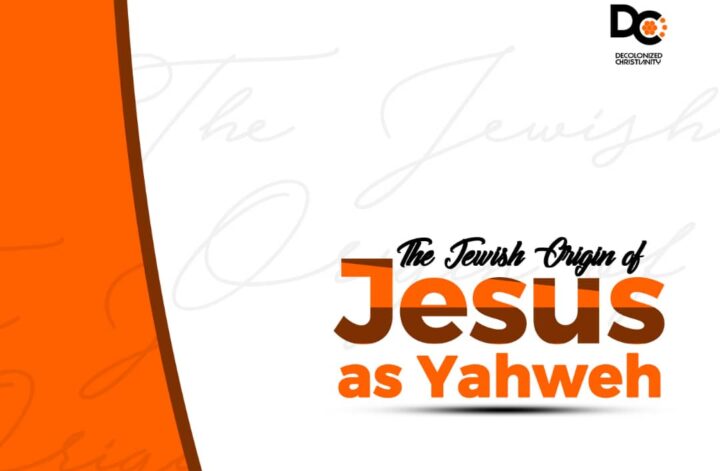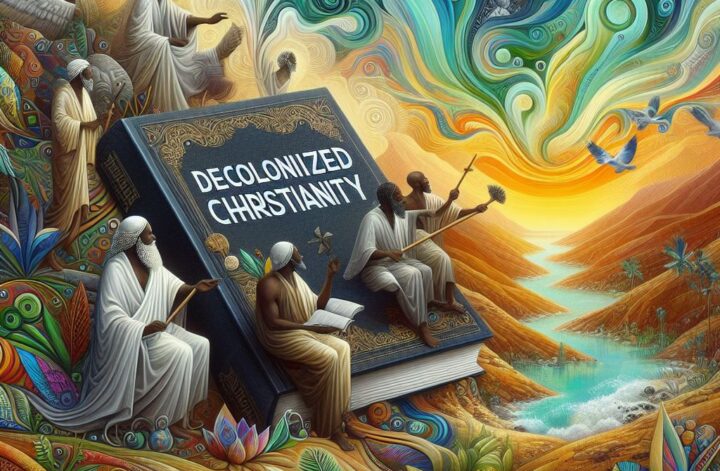What is Elohim?
In an older article linked here, I wrote about how “God” has taken on a definite meaning in Christianized spaces. I think a sufficient trace of older worldviews still survives in the modern rule that requires us to capitalize “G” in “God” when referring to the Christian God. Such a rule assumes the existence of other gods. Indeed, ancient Hebrews affirm the existence of other gods, the Hebrew God being the most high of them all. The Hebrew God is ontologically superior to the other gods.
The Old Testament uses the term elohim for “gods,” and the range of its application helps explain what exactly “god” meant to the people in the ancient Near East. “Elohim” is plural in form but, according to Hebrew grammar rules, the context can establish the exact referent of the term: if the verb is singular, “Elohim” often refers to the Most High; if plural, it typically refers to other gods. Carmen Imes writes:
“God”(elohim in Hebrew) and “Lord” (adonai in Hebrew) are not names. Elohim is a category of beings who inhabit the spiritual realm; angels are elohim and so are the gods of other nations. Adonai is a title that means “master,” whether human or divine. Both words can describe Israel’s deity. However, the God of Israel also revealed his name, inviting the Israelites to address him personally as “Yahweh.” (6)
Furthermore, elohim is a little more elastic than the English word “god.” As I wrote in the linked article above, the Old Testament uses elohim to “refer to Yahweh, gods foreign to Israel, the spirit of a dead human, and angels.” The elasticity manifests in that we do not typically think of dead people’s spirits as gods in English. In fact, in the worldview of ancient Mesopotamians, elohim is merely a residential term. All beings who do not normally reside on earth as living humans are elohim. We should also note, as Imes points out, that these elohim usually have other identifying labels. Angels, for instance, are malakim. Shedim is another term referring to other elohim. And, of course, Yahweh is an elohim. Here is a critical point to remember, in the words of the scholar Michael Heiser, “Yahweh is an elohim, but no other elohim is Yahweh.” Yahweh, to use Saint Anselm’s term, is the maximally greatest conceivable being. He is the Most High among elohim.
The Septuagint
The Septuagint is an ancient koine Greek translation of the Old Testament. In the centuries leading to the time of Jesus, there increasingly was a need for a Greek translation of the Old Testament for Hellenized Jews, especially the ones who lived far away from Jerusalem, the principal center of religious activities. The Septuagint was a major bible of many first-century Jews. New Testament writers, especially Paul, quoted heavily from the Septuagint. The relevant point to note is that the Septuagint translated “Yahweh” as “Kurios,” in keeping with Jewish reverence for the name, which is then rendered as “Lord” in English. (Exodus 9 is a good example.) When a New Testament book writer says “Kurios” in his writings, he may very well be referring to Yahweh depending on the context. The clearest cases are often those where a New Testament writer cites an Old Testament passage.
What’s the Trinity?
It is common for critics to point out that the term trinity does not appear anywhere in the bible. While that is true, it is also trivial. The term is chosen to denote the systematization of all the biblical data relating to the nature of God. One may choose any label one prefers, but the data argue for there being a plurality in the Godhead. There is more than one person in the Godhead. On the other hand, the bible also unmistakably teaches that there is only one God, and Yahweh is his name. The doctrine of the Trinity is orthodox Christianity’s label for the idea that God is tri-personal, as spelled out below in the following two sets of equally important ideas:
Propositions 1
-
-
- The Father is Yahweh
- The Son, Jesus, is Yahweh
- The Holy Spirit is Yahweh
-
Propositions 2
-
-
- The Father is neither Jesus nor the Holy Spirit
- The Son is not the Father and is not the Holy Spirit
- The Holy Spirit is not the Father or the Son.
-
Christians have offered all kinds of analogies to make sense of the Trinity, but they often further compound the problem. I do not think it should surprise us at all if we cannot find an analogy for the greatest being in the cosmos. Even the physical sciences offer very counter-intuitive and mind-bending phenomena with no perfect analogies in our everyday macro-world. I have, however, found one helpful description attributed to Nabeel Qureshi, who said that there are three who’s but one what in the Trinity. A more philosophical way of describing it would be to say three persons stand in I-you relationships, with each having the unique, indexical, first-person perspective.
PLURALITY IN THE GODHEAD OF THE HEBREW BIBLE
Earlier in Part One, we encountered a quote by Justin Martyr (c. 100 -165 AD) reproduced below (as cited by Busenitz):
“And that Christ being Lord, and God the Son of God, and appearing formerly in power as Man, and Angel, and in the glory of fire as at the bush, so also was manifested at the judgment executed on Sodom, has been demonstrated fully by what has been said.” (226-227)
This quote is full of key Old Testament ideas about a plurality of persons in the Godhead. Let us begin with Justin’s assertion that Jesus appeared “in the glory of fire as at the bush.” This is a reference to the burning bush account of Exodus 3.
The Angel of the LORD—What is he?
Exodus 3:1-6 states:
Now Moses was tending the flock of Jethro his father-in-law, the priest of Midian, and he led the flock to the far side of the wilderness and came to Horeb, the mountain of God. There the angel of the Lord appeared to him in flames of fire from within a bush. Moses saw that though the bush was on fire it did not burn up. So Moses thought, “I will go over and see this strange sight—why the bush does not burn up.”
When the Lord saw that he had gone over to look, God called to him from within the bush, “Moses! Moses!”
And Moses said, “Here I am.”
“Do not come any closer,” God said. “Take off your sandals, for the place where you are standing is holy ground.” Then he said, “I am the God of your father, the God of Abraham, the God of Isaac and the God of Jacob.” At this, Moses hid his face, because he was afraid to look at God. (Emphasis added.)
This passage conveys a subtle idea that is very easy to miss. While Moses was minding his business, he noticed an unnatural thing—a fiery bush that was not being consumed. Like any curious person, he made sure that it was not an optical illusion. Unknown to Moses, a character called the Angel of the LORD who was within the bush caused the supernatural phenomenon. Then, the author of this passage did something linguistically strange when he writes: “When the Lord saw that he had gone over to look, God called to him from within the bush, ‘Moses! Moses!’”
Remember that the only character within the bush is the Angel of the LORD. So, when the writer says Yahweh called Moses after Moses “had gone over” to the burning bush, this language implies that Yahweh is not in the bush where the Angel of the LORD is. But then the writer says that Yahweh (Elohim with a singular verb) called to Moses from within the bush. But wait, Yahweh is not within the bush, unless. . .yeah. The writer of Exodus depicts this Angel of the LORD character as Yahweh. That is, there are two divine persons in this passage, and both are Yahweh. One Yahweh figure is humanoid while the other is depicted as invisible.
Jacob, his two wives, and Laban
If the Exodus passage above were the only one merging “Yahweh” and “the Angel of the LORD,” we would be justified to suspect a textual error or corruption. But it is not. Consider another odd passage in Genesis 31:10-13,
In breeding season I once had a dream in which I looked up and saw that the male goats mating with the flock were streaked, speckled, or spotted. The angel of God said to me in the dream, ‘Jacob.’ I answered, ‘Here I am.’ And he said, ‘Look up and see that all the male goats mating with the flock are streaked, speckled or spotted, for I have seen all that Laban has been doing to you. I am the God of Bethel, where you anointed a pillar and where you made a vow to me. (Emphasis added)
This passage is from Jacob’s explanation of his wealth to his wives. Yet, Jacob equates “The angel of God” with “the God of Bethel” who appeared to Abraham and Isaac just like Moses did earlier (Genesis 28:13, Exodus 3:16-17).
Exactly who led the Hebrews out of Egypt?
We find the merging of Yahweh and the Angel of the Lord again in the exodus narrative. The famous Ten Commandments of Exodus 20 has the preface: “I am the Lord your God, who brought you out of Egypt, out of the land of slavery” (20:2). The following verses also support this idea:
When Pharaoh let the people go, God did not lead them on the road through the Philistine country, though that was shorter. For God said, “If they face war, they might change their minds and return to Egypt.” So God led the people around by the desert road toward the Red Sea. (Exodus 13:17-18, emphasis added.)
By day the LORD went ahead of them in a pillar of cloud to guide them on their way and by night in a pillar of fire to give them light, so that they could travel by day or night. Neither the pillar of cloud by day nor the pillar of fire by night left its place in front of the people (Exodus 13:21-22, emphasis added.)
So, Yahweh led Israel out of Egypt, according to Exodus 13. Yet, in the very next chapter of Exodus, we find interesting details. For instance, just after Moses called unto God for help, having seen that Pharaoh and his armies were approaching, we read:
“Then the angel of God, who had been traveling in front of Israel’s army, withdrew and went behind them. The pillar of cloud also moved from in front and stood behind them, coming between the armies of Egypt and Israel” (Exodus 14:19-20, emphasis added).
So, the Angel of God led Israel from the front, even though we earlier read that Yahweh was the one leading the army. We may forgive someone for thinking that maybe God led the army indirectly through an angel, even though the text uses a definite article to describe the angel. But such reasoning is soon invalidated when we read Judges 2. The time of the Judges, of course, was when Israel had already settled in the promised land. Judges 2:1-2 (emphasis added) says,
The angel of the LORD went up from Gilgal to Bokim and said, “I brought you up out of Egypt and led you into the land I swore to give to your ancestors. I said, ‘I will never break my covenant with you, and you shall not make a covenant with the people of this land, but you shall break down their altars.’ Yet you have disobeyed me. Why have you done this?
What?! This is not the language of a messenger like angels Michael and Gabriel. Here, the Angel of the LORD says he brought the Israelites out of Egypt to the land that he swore to Abraham, Isaac, and Jacob. And then he adds, “you have disobeyed me.” We would expect a mere messenger to say something like, “you have disobeyed the Lord God who sent me.” Besides, we know Yahweh was the one who promised the land to Abraham (Genesis 17). So, what exactly does this “angel of the Lord” character think of himself? The only reasonable answer is that he thinks himself to be Yahweh.
I am aware that generations of churchgoers have been trained to explain away some of these odd passages as mere cases of angels fully representing God. But surely such an explanation is pallid for two reasons. First, the “Angel of the LORD” passages treat Yahweh and the Angel as similar persons and would often blend their character roles without warning. Secondly, we have several other instances of angelic appearances in the Bible where the angels are clearly depicted as mere messengers. Consider the angels of Daniel 10, for instance. After twenty-one days of praying, an angel appeared to Daniel saying:
O Daniel, man greatly loved, understand the words that I speak to you, and stand upright, for now I have been sent to you.” And when he had spoken this word to me, I stood up trembling. Then he said to me, “Fear not, Daniel, for from the first day that you set your heart to understand and humbled yourself before your God, your words have been heard, and I have come because of your words. The prince of the kingdom of Persia withstood me twenty-one days, but Michael, one of the chief princes, came to help me, for I was left there with the kings of Persia” (10:11-13)
So, we see that this angel who was sent to Daniel with a message was resisted by a divine “prince of the kingdom of Persia” and needed the help of a higher-ranking chief prince Michael to break through the resistance. It is clear here that the angels are mere messengers. The same thing characterizes the passages about angel Gabriel (Daniel 8:15-27, 9:20-27).
Let us consider the famous example of the angel foretelling the birth of John the baptizer – an example that is technically and properly Old Testament. While Zechariah was minding his business in the temple, “an angel of the LORD” appeared to him (Luke 1:11). Notice that it was not the Angel of the LORD but just an angel. This angel delivers a message about which Zechariah was too slow to believe. Apparently irritated, this angel declared:
I am Gabriel. I stand in the presence of God, and I was sent to speak to you and to bring you this good news. And behold, you will be silent and unable to speak until the day that these things take place, because you did not believe my words, which will be fulfilled in their time.” (Luke 1:19-20)
Once again, we see clearly that Gabriel is a mere messenger who stands in the presence of God but not in God’s place like the Angel of the LORD character. We do not see any linguistic move collapsing the identity of Yahweh with the angel’s. As we shall see in Part 3, there is another example of a mighty angel in Revelation 19:10 who clearly distinguished himself from Yahweh.
There are several other passages in the Old Testament intimately linking Yahweh and the Angel of the LORD including Judges 6, but I think we have surveyed enough data to show that a plurality in the Godhead of the Hebrew Bible exists: There is a Yahweh figure who takes on human form and there is another who seems to act from a distance. It is noteworthy to pay attention to the lyrics of the song of praise Moses and all Israel sang following the defeat of Pharaoh’s army (Exodus 15:1-3 NKJV, emphasis added):
I will sing to the Lord,
For He has triumphed gloriously!
The horse and its rider
He has thrown into the sea!
The Lord is my strength and song,
And He has become my salvation;
He is my God, and I will praise Him;
My father’s God, and I will exalt Him.
The Lord is a man of war;
The Lord is His name.
Moses and all Israel witnessed Yahweh as a man, a reference to the Angel of the LORD who led them in battle.
Interestingly, the merging of the identities of Yahweh and the Angel of the LORD is not the only way that the Hebrew bible conveys plurality in the Godhead. There is an equally powerful and better-known way that the bible does this in the book of Daniel.
What’s up with the Son of Man?
Daniel 7 is a famous bible passage, and it is a favorite of New Testament books writers. In the middle of a vision of unnatural four beasts, Daniel saw “the Ancient of Days” seated on his throne. Undoubtedly, this figure is Yahweh, especially considering the description of his grandeur and majestic presence (7:9-10). Then, Daniel’s vision shifts to another character (7:13-14):
“In my vision at night I looked, and there before me was one like a son of man, coming with the clouds of heaven. He approached the Ancient of Days and was led into his presence. He was given authority, glory, and sovereign power; all nations and peoples of every language worshipped him. His dominion is an everlasting dominion that will not pass away, and his kingdom is one that will never be destroyed.”
On a cursory reading, there does not seem to be much going on here. The “son of man” figure was led to the Ancient of Days and given power and authority. It seems straightforward that the son of man is ontologically inferior to the Ancient of Days, except for two odd details. First, “all nations and peoples of every language worshipped” the Son of Man (literally, “human being” in Aramaic). This is problematic in the Jewish context, as only Yahweh is truly deserving of worship. Yet, we read here that Yahweh himself sanctions humans’ worship of the son of man. The second point is a little more subtle, and it concerns the epithet coming with the clouds of heaven. What exactly does that mean and how do Old Testament writers use it? Let us find out.
Isaiah 19:1 says:
“Behold, the LORD is riding on a swift cloud
and comes to Egypt;
and the idols of Egypt will tremble at his presence,
and the heart of the Egyptians will melt within them.” (Emphasis added)
Psalm 104:1-3 states:
“Bless the LORD, O my soul!
O LORD my God, you are very great!
You are clothed with splendor and majesty,
covering yourself with light as with a garment,
stretching out the heavens like a tent.
He lays the beams of his chambers on the waters;
he makes the clouds his chariot;
he rides on the wings of the wind” (Emphasis added).
Finally, Deuteronomy 33:26 asserts:
‘There is no one like the God of Jeshurun,
who rides across the heavens to help you
and on the clouds in his majesty. (Emphasis added)
So, what we learn is that the coming with the cloud (or riding on the cloud) epithet uniquely identifies Yahweh. Yet, Daniel applies the same epithet to the son of man of his vision. As we shall see later when we address divine plurality in the New Testament, Jesus would appropriate this vision of Daniel, and the reigning high priest of his day would interpret it as blasphemous.
In summary, the notion of a plurality in the Godhead of the Old Testament was a well-known idea embraced by Judaism until the second century AD, when it became a heresy because Jewish believers in Jesus identified him as Yahweh. Michael Heiser writes in The Unseen Real in a footnote (134-135):
The Jewish community that inherited the Old Testament was well aware of this. For centuries Judaism felt no discomfort with the notion of two Yahweh figures. The idea was referred to as the “two powers in heaven” and was endorsed within Judaism until the second century AD. . .. The major work on Judaism’s two-powers teaching was published originally in 1971 by the late Alan Segal. Segal was Jewish and his career focused on Second Temple and Rabbinic Judaism. His work documents how the two-powers idea became a heresy in Judaism in the second century AD.
Generations of Jews have read (and continue to read) the Old Testament passages treated here the way I have handled them. The New Testament Jewish authors did not invent the idea of a plurality in the Godhead. They merely fleshed out a structure that already existed, as we shall next see.
Works Cited
Busenitz, Nathan. “Did Constantine Invent the Trinity?: The Doctrine of the Trinity in the Writings of the Early Church Fathers.” MSJ, vol. 24, no. 2, 2013, pp. 217-242.
Heiser, Michael. “Elohim as ‘Gods’ in the Old Testament.” https://drmsh.com/elohim-divine-council-psalm-82-ot-monotheism-archive/. Accessed 25 Jan 2020.
Heiser, Michael. The Unseen Realm: Rediscovering the Supernatural Worldview of the Bible. Lexham, 2015.
Imes, Carmen Joy. Bearing God’s Name: Why Sinai Still Matters. IVP, 2019.




